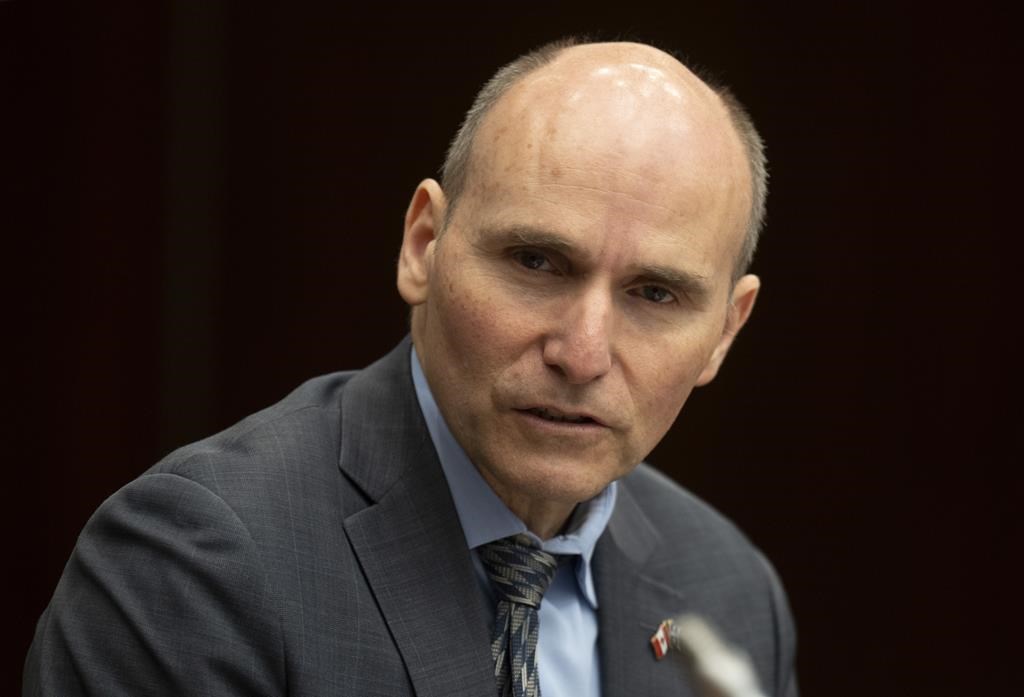Liberals’ political will on pharmacare questioned as minister promises progress

Health Minister Jean-Yves Duclos says the government’s plans for pharmacare are moving forward, but experts who study government drug plans suggest the Liberals may have lost the political will to take bold steps toward a national program.
People like Marc-André Gagnon were still holding out hope that spending would be set aside in Tuesday’s federal budget to create a national, single-payer drug plan.
But though the Carleton University health policy professor said he was optimistic, he also admitted he wasn’t surprised when there was no mention of pharmacare in the document.
Advertisement
“We don’t see the political willingness anymore,” Gagnon said in an interview Friday.
Progress on pharmacare is one of the conditions of the confidence-and-supply agreement the NDP entered with the Liberals last year, in which the NDP throws its support behind the government on key confidence votes in exchange for progress on the party’s priorities.
Under the agreement, the government has until the end of this year to pass some kind of pharmacare legislation, and must put together a national list of essential medicines and a plan for bulk purchasing by 2025.
Related article:
Advertisement
Duclos said in no uncertain terms that progress on the file will continue — but that progress is likely to be incremental.
“We’re making steps moving forward. But we’ll have to proceed step by step,” he said in an interview, adding that first, the cost of drugs needs to be driven down and medications need to be made more accessible.
One of those early steps was the launch of the National Strategy for Drugs for Rare Diseases last month, which committed $1.5 billion toward improving the access to and affordability of effective drugs for rare diseases over three years.
Duclos called it “an important signal to what we are looking to do in the longer term.”
But there’s no denying that government enthusiasm for a national drug program has tempered significantly over the last several years. What began as a legacy-making policy proposal for the Liberals in 2015 now rarely gets a mention on Parliament Hill, as other health concerns have crowded the national conversation.
Advertisement
Read more:
The health minister’s office was consumed with the pandemic and the health-care crisis that followed, and the department has also been busy with another condition of the Liberals’ deal with the NDP: national dental insurance for uninsured low- and middle-income families.
“With the pandemic, everything was put on hold, and basically, they never got back to this issue of a national prescription drug plan, even if they have all the tools,” Gagnon said.
Making headway on pharmacare now would likely mean spending money the government can’t spare anymore, Simon Fraser University health policy professor Steven Lewis said in an interview.
Advertisement
“There would probably have to be a new tranche of money, which I don’t see forthcoming anytime soon given that this deficit is a bit bigger than was anticipated,” Lewis said.
In 2017, the Parliamentary Budget Officer estimated a pharmacare plan would cost $19.3 billion per year if it had been implemented in 2015, and would grow over time to cost $22.6 billion. In today’s dollars, the annual cost would be between $23 billion and $27 billion.
At the same time, overall spending on drugs — between governments, insurance companies and Canadians — would be expected to drop by $4.4 billion as a result of better purchasing power.
Lewis said it’s difficult to know how much pharmacare would cost before knowing exactly how the government plans to do it. For example, the government could choose to tax employers who previously offered drug benefits to recoup some of the cost.
In 2019, the government got a detailed road map to guide the path toward a national pharmacare program, which recommended starting with essential drugs first.
Advertisement
That report, put together by a National Advisory Council led by Dr. Eric Hoskins, suggested the initial public spending increase would be roughly $4.1 billion if it was implemented in 2022, and would grow to cost $38.5 billion by 2027 as the list of covered drugs expanded.
Aside from the cost pressures, both Lewis and Gagnon said the government may be facing pushback from the pharmaceutical industry.
Changes to the way drug prices are set at the Patented Medicine Prices Review Board have been met with resistance from industry and patient groups who worry that lower prices will affect access to new drug therapies in Canada.
“A genuine pan-Canadian, fully medicare-inclusive pharmacare program is going to create some winners and losers with pharma,” said Lewis, who explained there would likely be firmer price negotiations and clampdowns on off-label drug use.
But while critics suggest the government is dragging its feet, Duclos characterizes it as carefully laying the groundwork.
Advertisement
Pharmacare “is done better when we have better access, better affordability and better knowledge of how to use drugs in Canada,” Duclos said.
He added that there’s still a lot to do before figuring out the next step, to make sure each stride toward long-term pharmacare is the right one.
